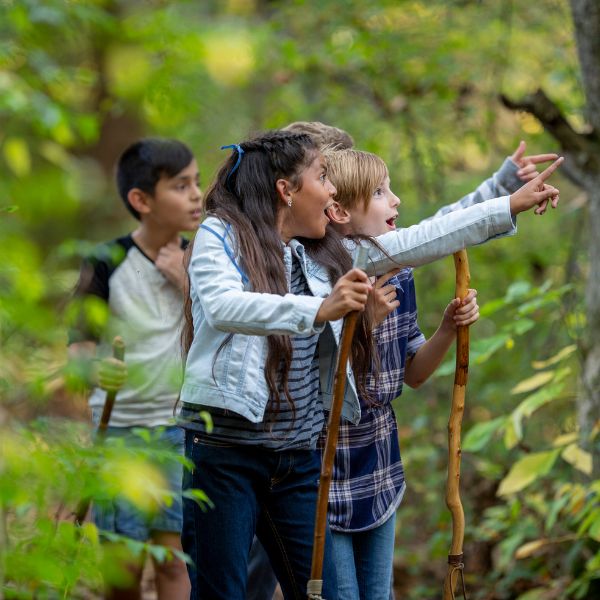
How to Use Nature as a Classroom: Outdoor Learning for Kids.
Getting kids outdoors and engaging with nature provides a wealth of benefits for their development and learning. Nature offers endless opportunities for promoting creativity, building social-emotional skills, and enriching academic learning across subjects. With some planning and imagination, the natural world can become an engaging, stimulating, and cost-effective classroom for children of all ages.
The Benefits of Outdoor Learning
Connecting with nature boosts children’s physical and mental health. Exposure to fresh air, sunlight, and natural environments has been shown to reduce stress, improve focus and cognitive function, and decrease risk of conditions like depression, anxiety, obesity, and diabetes. Spending time outdoors also gives children plenty of opportunity for physical activity and develops motor skills and fitness.
Outdoor learning facilitates social and emotional growth. Unstructured play and exploration in nature encourages independence, confidence, problem-solving, and teamwork. Appreciation of the natural world also promotes empathy and responsibility. Studies indicate that time in nature may reduce bullying behaviours and aggression.
Academic learning thrives outdoors. Nature provides real-world examples that reinforce concepts in science, math, language arts, and other subjects. For example, observing birds teaches biology concepts, while measuring trees involves math skills. Being surrounded by diverse plants, animals, and ecosystems also boosts overall knowledge.
Making the Most of Outdoor Learning
Follow the child’s lead. Give children free rein to explore on their own terms. Make observations, ask questions, look under rocks, dig in soil, collect items. Don’t control their experience but encourage curiosity. Bring along journals or cameras to document discoveries.
Get hands-on. Engage multiple senses by touching, listening, smelling, and tasting (only plants!). Feel tree bark, observe insects, smell flowers and herbs. Cook over a campfire, build structures from sticks and leaves. Fully immersive sensory experiences deepen connections with nature.
Use natural items for crafts and games. Flowers, leaves, acorns, sticks, and stones present endless opportunities for creative hands-on fun. Make a nature mosaic, leaf rubbing, or flower press. Play hide and seek or scavenger hunts. Set up an obstacle course. Get silly by making mud pies.
Visit often. Aim to spend time outdoors multiple times a week, in all kinds of weather. Embrace puddles, snow, wind, and storms. Return to favourite spots to observe changes. Letting nature become familiar and comfortable nurtures bonding.
Outdoor Learning for Foster Children
Spending time outdoors offers significant benefits for children fostered with fosterplus.co.uk, even during a short-term interim placement. Nature can be a healing environment. Unstructured outdoor play encourages emotional regulation, reduces stress, and improves mood. Parks and wilderness allow room to run freely. Interacting with plants and animals teaches empathy. Achieving goals like climbing a rock wall builds resilience and self-confidence. Feelings of renewal and being at peace in nature can instil hope. Ensure outdoor time is frequent, engaging, and positive for foster children.
Nature presents a freely available, diverse, and stimulating classroom for child development and learning. Outdoor activities not only teach academic subjects, but also nurture creativity, social-emotional skills, health, and wellbeing. Making outdoor adventures a regular part of children’s routines will lead to reduced stress, increased knowledge, a lifelong appreciation of the natural world, and most importantly – joyful fun.
Share the love.
Related
You May Also Like

Areas To Focus On In Your Garden To Create The Garden Of Your Dreams
December 12, 2023
Annie Bee’s Colouring Sheets for Parents – Instasham
April 30, 2019



